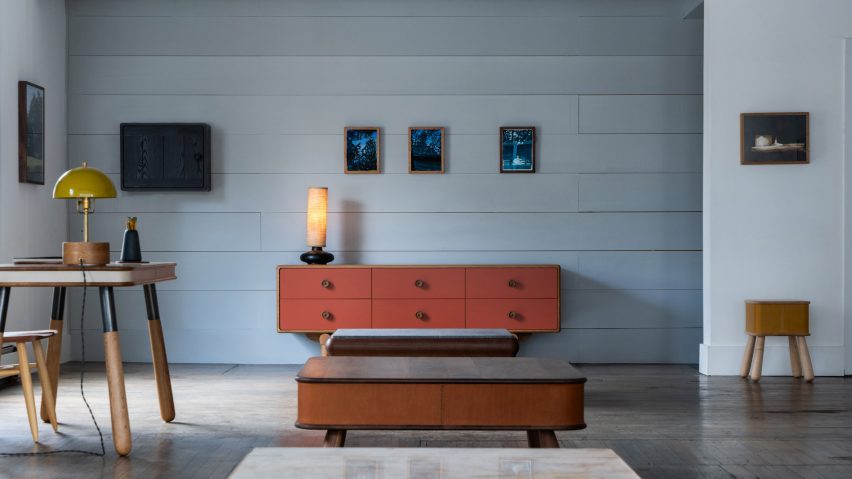
Five design-focused exhibitions from Upstate Art Weekend
An abandoned school building converted into art galleries and a furniture collection informed by a childhood baseball bat were among the objects and exhibitions on display during Upstate Art Weekend in the Hudson Valley.
Taking place in towns throughout the Hudson Valley north of New York City, from Hunter to Beacon, this year's Upstate Art Weekend featured approximately 145 art and design galleries, organisations and studios that opened their doors to an influx of visitors.
Founded in 2020 by organiser Helen Toomer, the yearly event sees a variety of local art, design, and cultural organisations host open studios or temporary exhibitions to showcase "the cultural vibrancy of Upstate New York".
The various shows are tucked within back alley studios such as Justin Cooper's or feature outdoor installations spread out over pastoral property at places like Army of Frogs and Mother in Law's.
"What I like about it, is that it's a mix," Toomer told Dezeen. "It's not a gallery week, it's not an art fair. Its institutions, projects, galleries – it runs the gamut of the variety for people that want to come and see and support."
"The other thing that I love about upstate is that you can stay hidden or you can reveal yourself if you want to," she continued.
The round-up below displays the variety of shows and exhibitions the weekend has to offer, including objects, furniture and art on display throughout the valley.
Read on for our top picks from this year's art weekend.
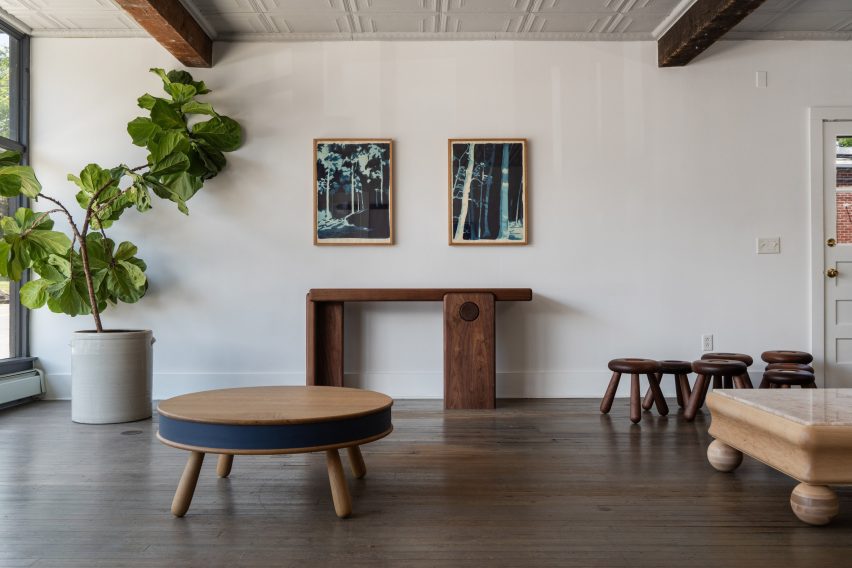
Michael Robbins
Furniture designer Michael Robbins showcased his new Terrapin collection alongside art by Kyle Nilan in his Germantown showroom. The objects on view included a coffee table, side table and desk, all wrapped in a thick band of hand-stitched leather atop baseball-bat-shaped legs.
"Terrapin represents reacquaintance with youthful objects and timeless craftsmanship," said Robbins. "The collection was inspired by an old childhood baseball bat that I found at my parents' home while searching for a glove to play catch with my son."
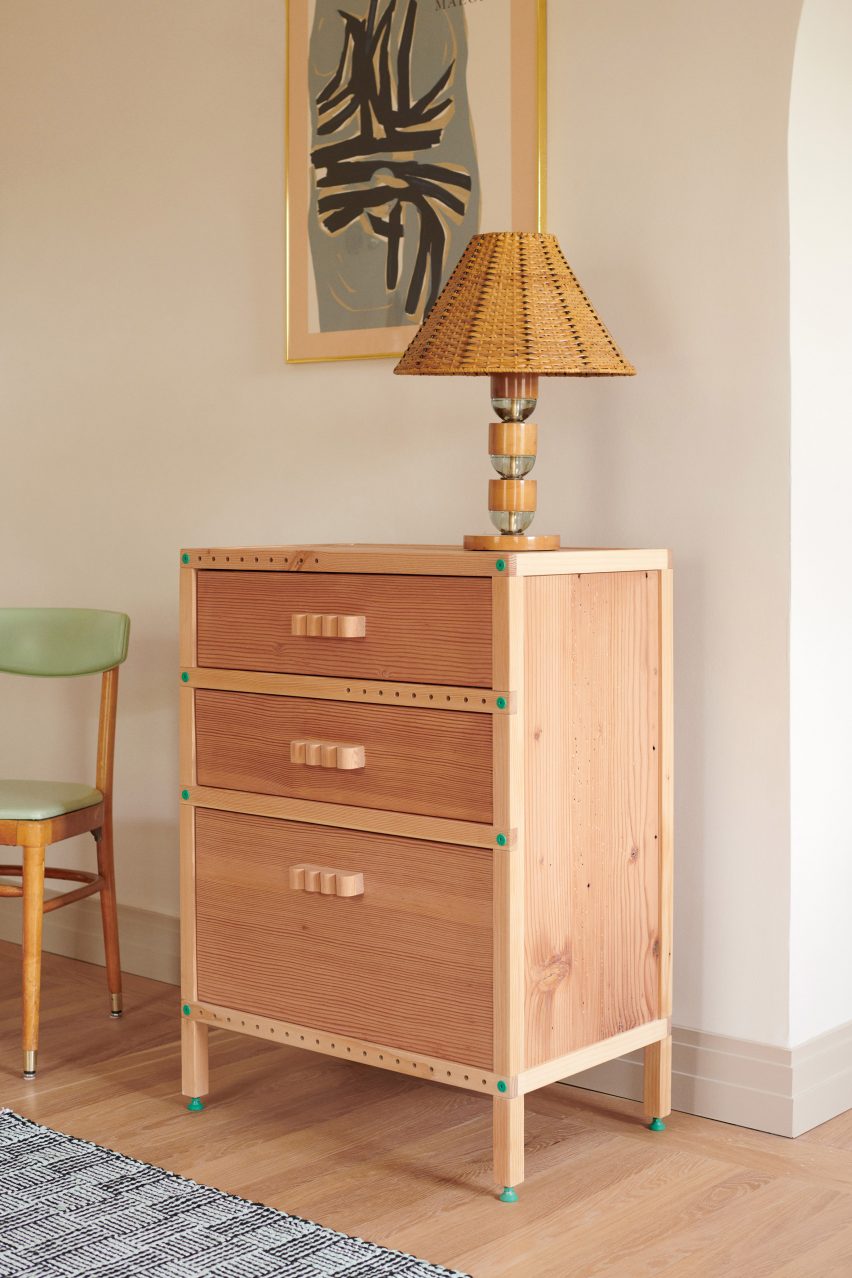
Loose Parts
Designer and educator Jennifer June of studio Loose Parts displayed a dresser, chair, console table and outdoor seating as part of her Site as Quarry exhibition, located in her Catskill showroom and studio.
The pieces continue the designer's work with reclaimed materials, building upon a collection of modular furniture that is constructed using a system of "rails" and "panels" designed for easy assembly.
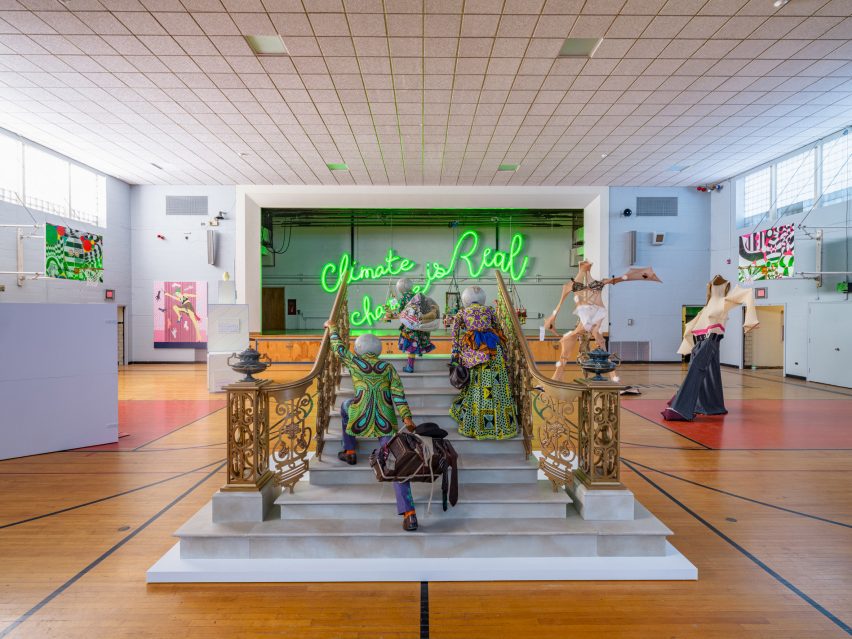
The Campus
Six New York art studios came together to buy and convert an ageing 1950s Claverack school building into The Campus, where a biennial exhibition features art and indoor and outdoor installations by dozens of artists spread throughout classrooms and the recess yards.
In the gymnasium, the installation Moving Up by Yinka Shonibare which is centred around the Great Migration, sits in front of Andrea Bower's Climate Change is Real installation, with that phrase scrawled in neon across the stage.
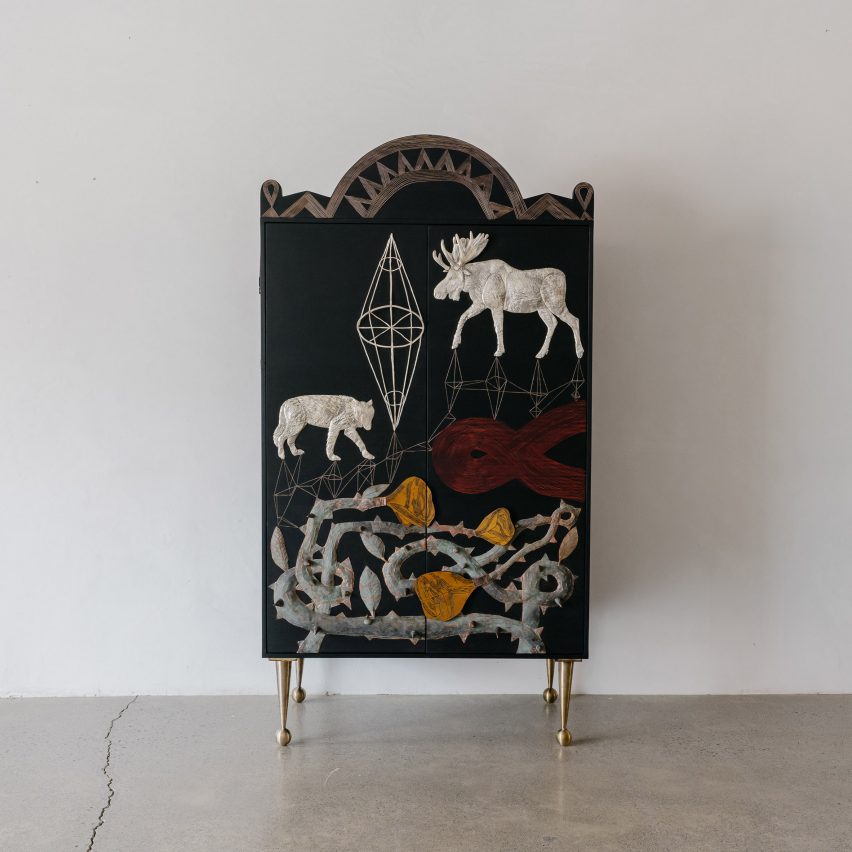
Sawkille Co.
Furniture design studio Sawkille Co. exhibited work by local artist Mackenzie Parker and pieces by craftsman Jonah Meyer in its Rhinebeck showroom, including an ornate dresser by Meyer.
A variety of symbols including a wolf and moose featured on its doors, which were informed by Meyer's upbringing in rural Pennsylvania, as well as motifs the artists saw on ancient buildings during a trip to Rome.
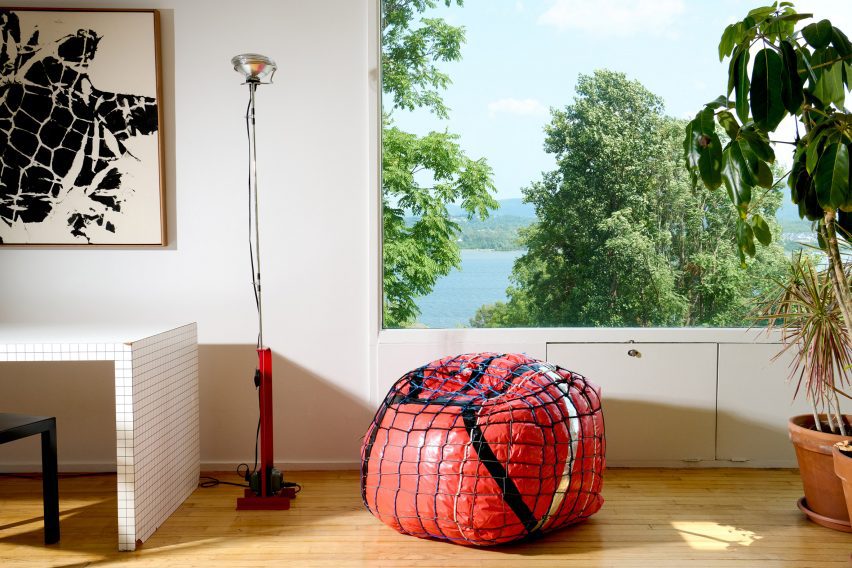
Wolfhouse
Design organisation Wolfhouse displayed a variety of home objects throughout its restored mid-century home, including a bright red "bondage" bean bag chair made in collaboration with artist Maia Ruth Lee and a Wolfhouse x USM "catch-all" bin.
Located in Newburgh and originally designed by Philip Johnson in 1949, the property was restored into a cultural space and rental in 2020 by co-founders Jeremy Parker and Jiminie Ha and now hosts a variety of programming, as well as visitors for overnight stays.